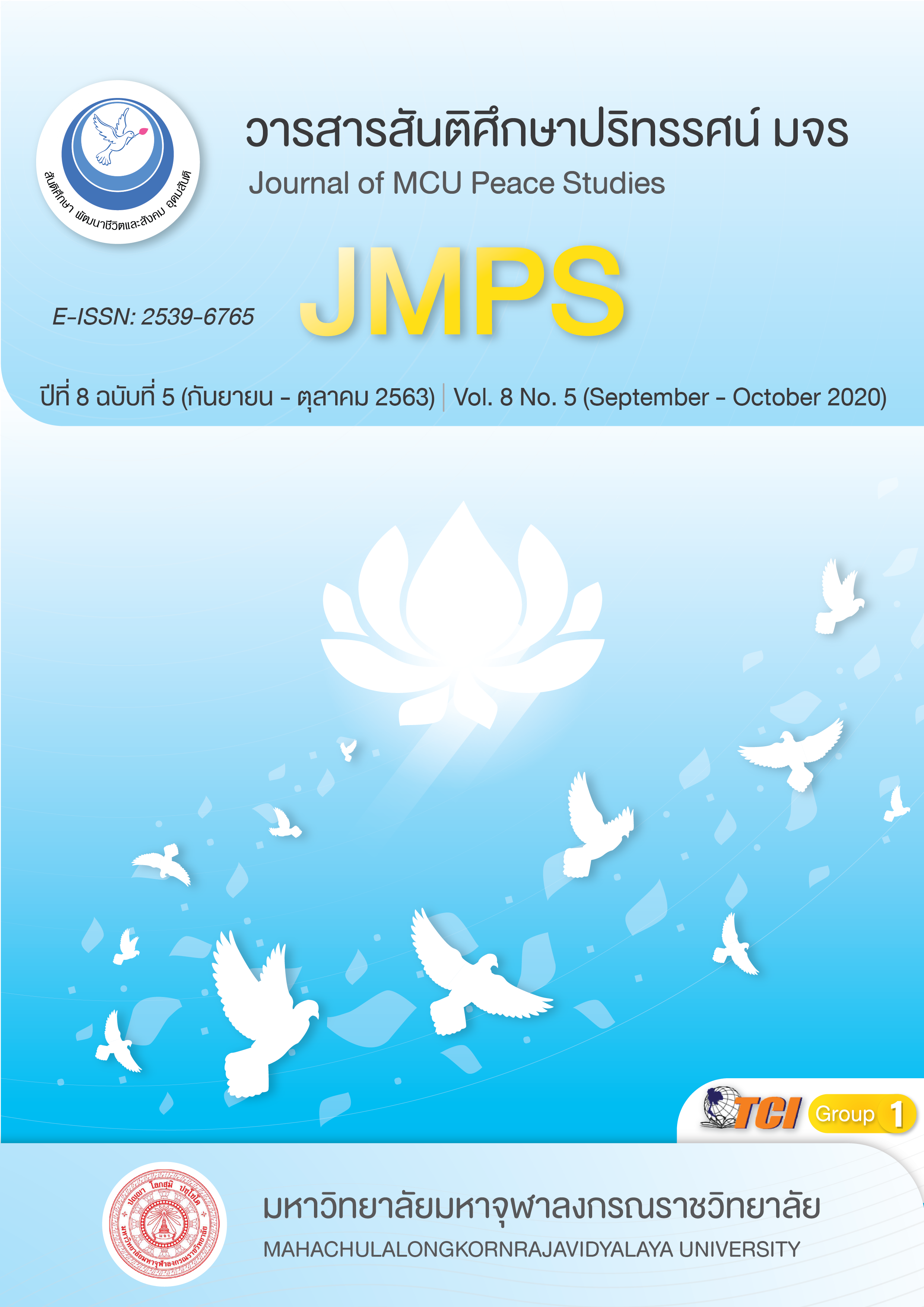การบริหารภาครัฐแนวใหม่ของกระทรวงเกษตรและสหกรณ์ ในการกำกับดูแลสหกรณ์เครดิตยูเนี่ยน
Main Article Content
บทคัดย่อ
บทความวิจัยนี้มีวัตถุประสงค์เพื่อ 1) ศึกษาสภาพการกำกับดูแลสหกรณ์เครดิตยูเนี่ยนของกระทรวงเกษตรและสหกรณ์ในปัจจุบัน 2) ศึกษาองค์ประกอบที่ส่งผลต่อการกำกับดูแลสหกรณ์เครดิตยูเนี่ยน และ 3) ศึกษาการบริหารภาครัฐแนวใหม่ของกระทรวงเกษตรและสหกรณ์ในการกำกับดูแลสหกรณ์เครดิตยูเนี่ยน ใช้วิธีวิจัยเชิงคุณภาพ กลุ่มผู้ให้ข้อมูลสำคัญได้แก่ 1) กลุ่มผู้บริหารส่วนราชการที่กำกับดูแล หน่วยงานที่เกี่ยวข้อง และผู้เชี่ยวชาญ 2) กลุ่มผู้บริหารสหกรณ์เครดิตยูเนี่ยนคลองจั่น และ 3) กลุ่มสมาชิกสหกรณ์เครดิตยูเนี่ยนคลองจั่นซึ่งเป็นผู้รับผลกระทบ รวบรวมข้อมูลและวิเคราะห์ข้อมูลจากเอกสารและงานวิจัยที่เกี่ยวข้อง การสัมภาษณ์เชิงลึก และการประชุมระดมสมอง ผลการวิจัยพบว่า 1) สภาพการกำกับดูแลสหกรณ์เครดิตยูเนี่ยนของกระทรวงเกษตรและสหกรณ์ในปัจจุบัน มีหน่วยงานที่กำกับดูแล คือ กรมส่งเสริมสหกรณ์ และกรมตรวจบัญชีสหกรณ์ โดยอธิบดีกรมส่งเสริมสหกรณ์ทำหน้าที่เป็นนายทะเบียนสหกรณ์ ทำให้เกิดความไม่เท่าเทียมกันระหว่างกรม จึงมีจุดอ่อนในการประสานงาน 2) องค์ประกอบในการกำกับดูแล เจ้าหน้าที่ภาครัฐมีจำนวนไม่เพียงพอและขาดความชำนาญ ผู้บริหารสหกรณ์ไม่มีความชำนาญ สมาชิกสหกรณ์ละเลยการกำกับดูแล และ 3) การกำกับดูแลสหกรณ์เครดิตยูเนี่ยนแนวใหม่ของกระทรวงเกษตรและสหกรณ์ประกอบด้วยการปรับปรุงกฎหมายสหกรณ์ จัดตั้งสำนักนายทะเบียนสหกรณ์ วางมาตรฐานการดำเนินงานของสหกรณ์ พัฒนาขีดความสามารถของเจ้าหน้าที่ภาครัฐ และสร้างเครือข่ายความร่วมมือระหว่างผู้เกี่ยวข้อง
Article Details
ทัศนะและความคิดเห็นที่ปรากฏในบทความในวารสาร ถือเป็นความรับผิดชอบของผู้เขียนบทความนั้น และไม่ถือเป็นทัศนะและความรับผิดชอบของกองบรรณาธิการ ยินยอมว่าบทความเป็นลิขสิทธิ์ของวารสาร
เอกสารอ้างอิง
Ansell, C., & Gash, A. (2008). Collaborative governance in theory and practice. Journal of Public Administration Research and Theory, 18(4), 543-571.
Ansell, C., & Torfing, J. (2016). Handbook on theories of governance, UK.: Edward Elgar.
Azevedo, A., & Gitahy, L. (2010). The cooperative movement, self-management, and competitiveness: The case of Mondragon Corporacion Cooperativa. The Journal of Labor and Society, 13, 5-29.
Bevir, M. (2011). The SAGE handbook of governance. London: Sage Publications.
Considine, M. (2005). Making public policy: institutions, actors, strategies. Cambridge: Polity Press.
Cooperative Promotion Department. (2018). The historical movement of cooperatives in Thailand. Retrieved June 1, 2018, from: https://bit.ly/2WxVKNK.
Corsidine, M., & Afzal, K.A. (2011). The SAGE Handbook of Governance. London: Sage Publications.
Denhardt, J.V., & Denhardt, R.B. (2011). The new public service: Serving not steering (3rd ed.). Armonk, NY: Sharpe.
Hick, et al. (2008). The influence of collaboration on program outcomes: The Colorado nurse-family partnership. Evaluation Review, 32(5), 453-477.
Katsuyama, N. (2010). The economics of occupational licensing: Applying antitrust economics to distinguish between beneficial and anticompetitive professional licenses. Southern California Interdisc. Law Journal, 19(3), 565-587.
Kingsai, K., & Vaisamruat, K. (2018). Restructuring of the Thai Airways International Public Company Limited in time of crisis. Thammasat University Journal, 36(3), 183-216.
Kittiwiwatanapong, R., & Yossakrai, K. (2016). Paradox of outstanding savings cooperatives in Thailand and corruption problems. EAU Heritage Journal Social Science and Humanities, 6(1), 235-248.
Mitnick, B. (1980). The political economy of regulation. Cambridge, MA: Cambridge University Press.
OECD. (2005). Guiding principles for regulatory quality and performance. Paris: OECD.
Powell, W.W. (1990). Neither market nor hierarchy: Network form of organizing. Research in Organizing Behavior, 12, 295-336.
Rakkwamsuk, E. (2017). New public service provided by the provincial parliament office. Western University Research Journal of Humanities and Social Science, 3(2), 139-151.
Siriprakob, P. (2017). 3 paradigms of public administration: concepts, theories, and practices. (3rd ed). Bangkok: Chulalongkorn University Press.
Sompong, S. (2009). Woman empowerment in natural resources and environmental management in the Chi river basin. (Doctoral Dissertation) Graduate School, Ramkhamhaeng University. Bangkok.
Stapenhurst, R., & Titsworth, J. (2002). Features and functions of supreme audit institutions. Openknowledge.worldbank.org. Retrieved August 8, 2019, from: https://bit.ly/2qb0RVJ.
Suchman, M.C. (1995). Legitimacy: Strategic and institutional approaches. The Academy of Management Review, 20(3), 571–610.
Thepkraiwun, P. (2011). The development of collaborative network model for educational quality management in small sized primary schools. (Doctoralal Dissertation). Graduate School, Khonkaen University. Khonkaen.
Reeuwijk, L. P. (1998). Guidelines for quality management in soil and plant laboratories. Rome: Food & Agriculture Org.
Weber, E.P. (2009). Explaining institutional change in tough cases of collaboration: ‘Ideas’ in the Blackfoot Watershed. Public Administration Review, 69(2), 314-327.


